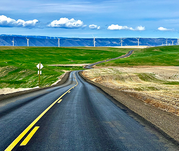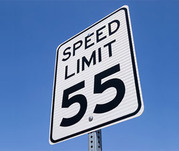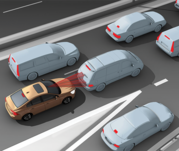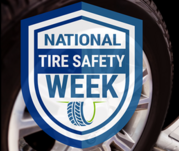|
|
|
June 2024
As Oregon enters the busy months for road projects, drivers will see more work zones. Watching for the color orange is a life and death priority for travelers and people doing the vital work on our roads. Road crews use technologies like automated flagging devices, mobile barriers, and portable message signs to make work zones safer. Those are in addition to the traditional color orange for work zones – signs, cones, and the vests road crews wear. But road crews can’t do it alone. Drivers must do their part to keep crews, themselves, and their passengers safe:
- Pay attention when you see orange signs, barrels, cones, and barricades and in the transition zone before the work area. An inattentive driver is the most common cause of work zone crashes.
- Drive as if you work there – slow down, keep your eyes on the road, and mind on the drive.
- Obey speed signs. Speed limits may be reduced to keep you and workers safe. Excessive speed is a major factor in all fatal crashes.
- Work zone traffic lanes often are narrow, without shoulders or emergency lanes.
- Move over to give workers more room when possible.
- Remember that fines double in all Oregon work zones, whether or not workers and signs are present.
- Plan ahead. Give yourself enough time for your trip, including potential work zone delays. You can get current Oregon road conditions at TripCheck.com or by calling 511.
|
|
|
Summer Driving Safety Tips

Hitting the road this summer? Plan ahead for an enjoyable trip and to ensure a safe journey with a few simple steps.
1. Check Road Conditions: Use Tripcheck.com to view live cameras across the state and see current road conditions. Look for traffic cone icons to spot construction delays on the map.
2. Stay Informed: Visit our Project Tracker map for detailed information on construction projects and planned roadwork.
3. Prepare for the Season: Our summer travel tips and resources website provides essential information to help you navigate Oregon’s roads during construction and wildfire season. Get safety and preparedness tips to make your travel experience safer and more enjoyable.
Remember, traffic safety starts with you! For additional tips and resources, visit the NHTSA Summer Driving Tips. Safe travels this summer!
|
Rules of the Road – Speed Limits

Oregon’s basic rule law says you must drive at a speed that is reasonable and cautious for existing conditions. To obey the basic rule, think about your speed in relation to other traffic, pedestrians, people riding bicycles, the surface and width of the road, hazards at intersections, weather, visibility, and any other conditions that affect safety.
In addition to the basic rule, Oregon has maximum speed limits. A speed limit is the maximum speed considered safe for the area under ideal driving conditions and limits are set in law for specified areas, whether a sign is posted or not. For example:
15 miles per hour in alleys,
20 miles per hour within school speed zones,
25 miles per hour in residential districts,
55 miles per hour on most highways.
|
New Vehicle Safety Rule

Last month, the U.S. Department of Transportation’s National Highway Traffic Safety Administration (NHTSA) finalized a new Federal Motor Vehicle Safety Standard that will make automatic emergency braking (AEB), including pedestrian AEB, standard on all passenger cars and light trucks by September 2029. This safety standard is expected to significantly reduce rear-end and pedestrian crashes.
NHTSA projects this new standard (FMVSS No. 127) will save at least 360 lives a year and prevent at least 24,000 injuries annually. AEB systems use sensors to detect when a vehicle is close to crashing into a vehicle or pedestrian in front and automatically applies the brakes if the driver has not. Pedestrian AEB technology will detect a pedestrian in both daylight and in darker conditions at night. This will significantly reduce injury or property damage and associated costs from these crashes. Similar to standardizing seat belts and air bags, making automatic emergency braking standard in new cars is one of the biggest road safety advancements in decades.
|
National Tire Safety Week

During National Tire Safety Week in June, remember to check your tire pressure monthly and ahead of long trips, get your alignment checked, rotate your tires, and inspect the tread of your tires. Do you know how to check your tire tread? Use the penny trick. If part of Lincoln’s head is covered by the tread, you’re good to go. If you can see all of his head, it’s new tire time.
|
Resources
|